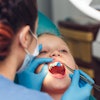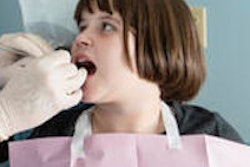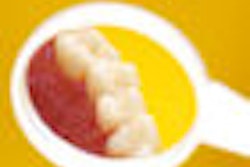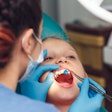
In a policy statement released on Monday, the American Academy of Pediatrics has come out strongly in favor of increased pediatrician knowledge of oral healthcare for children. "Because the youngest children visit the pediatrician more often than they visit the dentist, it is important that pediatricians be knowledgeable about the disease process of dental caries, prevention of the disease, and interventions available to the pediatrician and the family to maintain and restore health," the academy notes.
The policy statement, "Maintaining and Improving the Oral Health of Young Children," to be published in the December issue of Pediatrics (Vol. 134:6, pp. 1224-1229), notes that, ideally, primary prevention efforts will "anticipate and prevent caries" before they appear. Preventive strategies for caries require a comprehensive and multifocal approach that begins with a risk assessment, according to the academy.
The academy emphasizes in the policy statement that, while "pediatricians have the opportunity to provide early assessment of risk for dental caries and anticipatory guidance to prevent disease," it is just as crucial that parents and caregivers establish a dental home for their children.
“Establishing such collaborative relationships between physicians and dentists at the community level is essential for increasing access to dental care for all children and improving their oral and overall health.”
"Establishing such collaborative relationships between physicians and dentists at the community level," the academy adds, "is essential for increasing access to dental care for all children and improving their oral and overall health."
While there is "no single test" that considers all risk factors to predict a child's caries risk, the academy posits that pediatricians can focus on the key risk factors for dental caries that are associated with diet, bacteria, saliva, and status of the teeth (both current status and previous caries experience). In doing so, they can conduct an excellent risk assessment for caries.
With a clear understanding of the etiology of dental caries and the risk factors that lead to the spread of this disease, pediatricians can target anticipatory guidance to assist families in preventing it, according to the academy. Because the disease of dental caries is multifocal, the anticipatory guidance should also be multifocal. Pediatricians should concentrate their anticipatory guidance on topics that can affect the risk of disease.
The policy statement recommends that pediatricians should counsel parents and caregivers on the importance of reducing the frequency of exposure to sugars in foods and drinks. The academy notes that, to decrease the risk of dental caries and ensure the best possible health and developmental outcomes, pediatricians should recommend the following actions to parents and caregivers:
- Exclusively breastfeed infants for six months and continue breastfeeding as complementary foods are introduced for one year or longer, as mutually desired by mother and infant.
- Discourage putting a child to bed with a bottle. Establish a bedtime routine conducive to optimal oral health (for example, brush, book, and bed).
- Wean from a bottle by 1 year of age.
- Limit sugary foods and drinks to mealtimes.
- Avoid carbonated, sugared beverages and juice drinks that are not 100% juice.
- Limit the intake of 100% fruit juice to no more than 4 to 6 oz per day.
- Encourage children to drink only water between meals, preferably fluoridated tap water.
- Foster eating patterns that are consistent with guidelines from the U.S. Department of Agriculture.
Oral hygiene
As for oral hygiene, the academy notes that "anticipatory guidance for both parent and child is important." Among its key points on oral hygiene are the recommendations for parents and caregivers to model good oral hygiene and maintenance, and brush a child's teeth twice a day as soon as the teeth erupt with a smear or a grain-of-rice-sized amount of fluoridated toothpaste. After the 3rd birthday, a pea-sized amount should be used. It also notes that parents and caregivers should help or supervise a child's toothbrushing until "mastery is obtained," usually at around 8 years. The academy also endorses the use of fluoride and fluoride varnish.
The statement notes that pediatricians are often asked about the use of a pacifier or thumb-sucking. The academy notes that its "policy states that parents consider offering a pacifier at naptime and bedtime because of a protective effect of pacifiers on the incidence of sudden infant death syndrome after the first month of life." The statement continues, however, noting that "both finger- and pacifier-sucking habits will only cause problems with dental structures if they go on for a long period of time." Evaluation by a dentist is indicated for non-nutritive sucking habits that continue beyond 3 years of age.
The American Academy of Pediatrics (AAP)/Bright Futures Oral Health Risk Assessment Tool can be found here. The full policy statement can be found on the Pediatrics website.



















